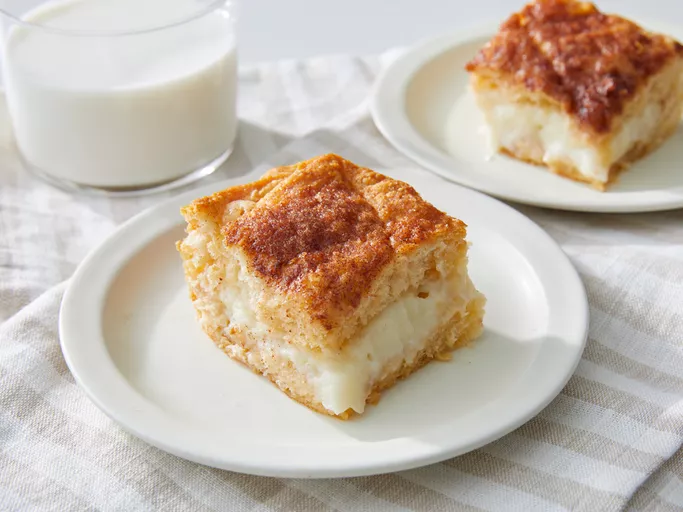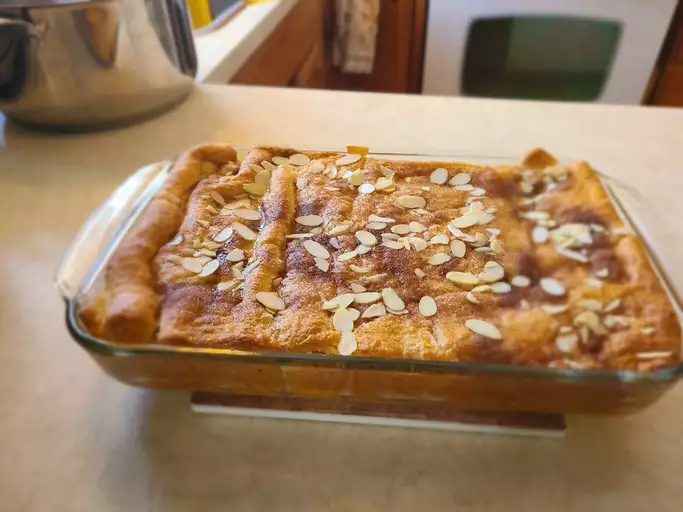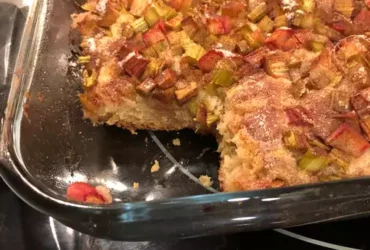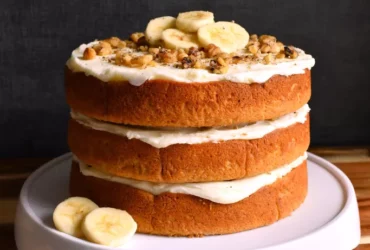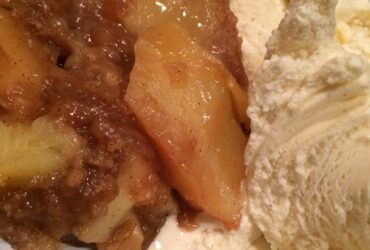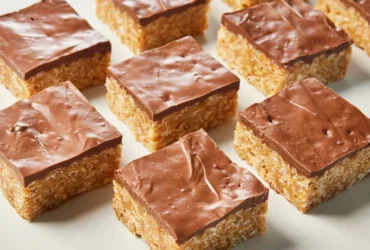Ingredients
For the Crust
The crust is an essential component of any baked good, and for this Cream Cheese Squares recipe, it’s made with a combination of ingredients that provide structure, flavor, and texture.
To make the crust, you’ll need the following ingredients:
- 1 1/2 cups all-purpose flour: This is the primary ingredient in the crust, providing it with its structure and texture. All-purpose flour has a neutral flavor, which won’t compete with the other ingredients in the recipe.
- 1/4 cup granulated sugar: Adding a small amount of sugar to the crust helps balance out the flavors and adds a touch of sweetness. It also helps to enhance the browning of the crust during baking.
- 1/2 teaspoon salt: A pinch of salt enhances the flavor of the other ingredients in the crust. Be careful not to add too much, as it can make the crust taste bitter.
- 1/2 cup unsalted butter, melted: This adds moisture and richness to the crust, making it tender and flaky. It’s essential to use melted butter for this recipe, as it will help the ingredients come together smoothly.
- 1 egg: The egg acts as a binder, helping the ingredients in the crust come together and form a cohesive dough. It also adds moisture and richness to the final product.
1 1/2 cups all purpose flour
In this recipe for Cream Cheese Squares, we will start by identifying the key ingredients, particularly focusing on All-Purpose Flour.
One and a half cups of All-Purpose Flour is the base ingredient in this recipe. It provides structure and texture to the final product. When it comes to baking, using the right type of flour is crucial.
All-purpose flour is a versatile and widely available type of flour that can be used for both sweet and savory baked goods. It contains a balanced ratio of protein, fat, and carbohydrates, making it suitable for a variety of recipes.
The high protein content in all-purpose flour helps to strengthen the gluten network, giving dough its elasticity and texture. However, using too much all-purpose flour can lead to a dense or tough final product, so measuring accurately is essential.
In this recipe, the 1 1/2 cups of All-Purpose Flour will be combined with other ingredients like butter, sugar, eggs, and cream cheese to create a delicious and crumbly mixture. As we progress through the recipe, we’ll see how this ingredient contributes to the final texture and flavor of our Cream Cheese Squares.
The use of all-purpose flour in baking allows for flexibility in terms of substituting other types of flour or adjusting ratios to achieve different results. However, it’s essential to note that using a high-quality all-purpose flour can make a significant difference in the overall flavor and texture of the final product.
1/4 cup confectioners’ sugar
Confectioners’ sugar, also known as powdered sugar or icing sugar, is a type of sugar that has been ground into an extremely fine powder. It is made by grinding granulated sugar into a fine powder, removing any lumps and air pockets through the process. This produces a smooth, even powder that dissolves easily in liquids.
One of the key characteristics of confectioners’ sugar is its texture. Because it has been ground so finely, it has a very light and airy feel. It is also very sweet, making it a popular ingredient in baked goods such as cakes, cookies, and frostings.
In the context of the Cream Cheese Squares recipe, the confectioners’ sugar serves several purposes. Firstly, it adds sweetness to the squares without overpowering them with a strong sugary flavor. Secondly, it helps to balance out the tanginess of the cream cheese and vanilla extract, creating a more balanced taste experience.
It’s worth noting that using confectioners’ sugar in this recipe also has a textural benefit. The fine powder helps to create a smooth and even texture throughout the squares, rather than having a grainy or speckled appearance.
1/2 teaspoon salt
The recipe for Cream Cheese Squares calls for various ingredients that come together to create a delicious and rich dessert. One of the ingredients listed is salt, which plays an important role in balancing the sweetness of the cream cheese filling.
In this specific recipe, 1/2 teaspoon of salt is required. Salt serves as a flavor enhancer, drawing out the flavors of other ingredients such as the cream cheese, vanilla extract, and sugar. It also helps to balance the texture of the dessert by preventing it from becoming too sweet or overpowering.
When using salt in baking, especially in desserts like this one, it’s essential to remember that a little goes a long way. Too much salt can be overwhelming and affect the overall taste of the dish. In contrast, the correct amount of salt enhances the flavors without dominating them.
It’s worth noting that the type of salt used in baking can also impact the final result. In this recipe, any type of fine-grained salt such as table salt or kosher salt would work well. However, using a flaky sea salt might be too overpowering for this particular dessert.
The 1/2 teaspoon of salt is an essential component of the cream cheese filling in this recipe. It helps to bring together all the other ingredients and create a harmonious balance of flavors that makes these cream cheese squares so delicious.
1/2 cup unsalted butter, softened
Unsalted butter, when mentioned as an ingredient for a recipe such as the Cream Cheese Squares, refers to a type of edible fat that plays a crucial role in enhancing the flavor and texture of various baked goods and desserts.
The quantity of 1/2 cup is specified to ensure that just the right amount of richness and tenderness is added to the Cream Cheese Squares without overpowering them with excess butter.
When it says ‘softened’, it indicates that the butter should be taken out of the refrigerator and left at room temperature for a while before being used in the recipe, so that it becomes pliable and easy to work with.
This is an important step because softened butter can be more easily mixed into other ingredients, allowing for a smoother and more even distribution of flavors throughout the Cream Cheese Squares.
The unsalted variety of butter is chosen to avoid introducing any additional saltiness to the recipe, which could alter its overall flavor profile or clash with other ingredients like cream cheese or sugar.
By using softened unsalted butter in the Cream Cheese Squares Recipe, home bakers can achieve a tender, flaky crust and a delightfully sweet and tangy filling that’s sure to please even the most discerning palates.
Instructions
Making the Crust
To make the crust for these delicious cream cheese squares, you’ll need to start by gathering a few simple ingredients. You’ll require all-purpose flour, cold unsalted butter, and ice water. It’s essential to use cold ingredients, as this will help create a flaky texture in your crust.
Begin by preheating your oven to 350°F (175°C). This will ensure that it reaches the optimal temperature for baking when you’re ready to put the squares in.
In a medium-sized bowl, whisk together 1 and 1/2 cups of flour. Make sure to use a gentle touch, as over-mixing can result in a dense crust. You want to aim for a light and airy texture.
Next, cut in 1 cup of cold butter using a pastry blender or your fingertips. Be careful not to overwork the dough at this stage, as you’ll need to add ice water later to prevent the formation of gluten.
Add 1/4 cup of ice water to the flour mixture and stir until the dough comes together in a shaggy mass. Don’t worry if it looks uneven at this point – it will come together once you knead it.
Turn the dough out onto a lightly floured surface and gently knead it 2-3 times, just until the dough starts to hold its shape. Be cautious not to over-knead, as this can lead to a tough crust.
Shape the dough into a flat disc and wrap it in plastic wrap. Refrigerate for at least 30 minutes or up to 2 hours to allow the gluten to relax and the butter to firm up.
When you’re ready to roll out the dough, remove it from the refrigerator and let it sit at room temperature for 10-15 minutes. This will help soften the dough slightly, making it easier to roll out.
Roll out the dough on a lightly floured surface to a thickness of about 1/4 inch (6 mm). Use a rolling pin to guide you if needed, but be gentle – you don’t want to stretch or distort the dough.
Transfer the rolled-out dough to a 9×13-inch baking dish and trim any excess crust from the edges. Don’t worry too much about the fit at this stage; you’ll be trimming any excess after it’s baked.
Preheat oven to 350°F (175°C).
To successfully make Cream Cheese Squares, it’s essential to follow the given instructions carefully, starting with the oven preheating process.
The first step involves setting the oven temperature to 350°F (175°C). This is a crucial aspect of baking, as the correct temperature ensures that your dish turns out perfectly. To achieve this, you will need to locate your oven’s control panel and adjust the temperature setting accordingly. It’s important to ensure that the temperature reaches the specified level before proceeding with the recipe.
Here are some general tips for preheating your oven:
- Always use an oven thermometer to verify the actual temperature.
- Make sure the oven is at room temperature before preheating.
- Avoid opening the oven door frequently while it’s preheating, as this can cause a temperature drop.
Once your oven has reached the desired temperature of 350°F (175°C), you’re ready to move on to the next step in making your Cream Cheese Squares. This will involve preparing the crust, which typically consists of buttered graham cracker crumbs or a similar mixture.
To create the best results with your Cream Cheese Squares recipe, it’s essential to follow each step carefully and ensure that all ingredients are properly measured and prepared before beginning. By doing so, you can enjoy delicious and satisfying treats that are perfect for any occasion or gathering.
In a medium bowl, whisk together flour, confectioners’ sugar, and salt.
The instructions for following a recipe effectively involve several steps that ensure accuracy and precision in executing the task at hand, particularly when dealing with a complex dessert like cream cheese squares.
Here are some key considerations to keep in mind when reading and following instructions:
- Read through the recipe carefully before starting: This involves taking the time to understand what is required, including the ingredients needed and the steps involved in preparing each component of the dish.
- Understand the meaning of key terms and abbreviations: Familiarizing oneself with common cooking terminology can help ensure accuracy in measurements and techniques.
- Measure ingredients accurately: Precision is crucial when baking, as small variations in ingredient quantities can impact the final result.
- Follow a logical sequence of steps: Recipes often involve multiple components that need to be prepared and combined at specific stages. Ensuring that these are completed in the right order will help prevent confusion or mistakes.
- Tackle one component at a time: Breaking down complex recipes into manageable parts can make them easier to follow and less overwhelming.
When following a recipe, it’s also essential to note any specific techniques, tools, or equipment required. For instance:
- The use of specialized baking pans or molds can be crucial for achieving the desired shape and texture.
- Particular cooking methods, such as creaming or kneading, may require specific tools or techniques to ensure success.
In the case of the Cream Cheese Squares recipe, certain steps will need to be completed in a specific order. For example:
- The initial step involves whisking together flour, confectioners’ sugar, and salt in a medium bowl.
Add the softened butter and mix until the dough comes together.
The process of following instructions is a crucial aspect of executing a recipe successfully, particularly when it comes to baking treats like cream cheese squares.
In this case, after combining the flour and sugar in a bowl, the next step involves adding softened butter to the dry ingredients. This requires gently incorporating the butter into the mixture using a pastry blender or your fingertips until it resembles coarse crumbs.
Once the butter is evenly distributed throughout the dry ingredients, proceed to add the cream cheese mixture, which has been softened to room temperature. Mix the wet and dry ingredients together until a cohesive dough forms.
Here’s an important note: as you mix the dough, it may appear crumbly or uneven at first, but with continued mixing, it should start to come together in a ball. This is a sign that your cream cheese squares are one step closer to being ready for baking.
The final step in preparing the dough for the cream cheese squares involves pressing it into a lined or greased pan to create an even layer. At this point, you can add any desired toppings or mix-ins, such as nuts or chocolate chips, before baking the squares according to the recipe’s instructions.
Press the dough evenly into an 8inch square baking dish.
To complete this task, it’s essential to understand the importance of pressing the dough evenly into an 8-inch square baking dish. This step is critical in achieving a uniform texture and presentation for your Cream Cheese Squares.
Why Pressing the Dough is Important
Pressing the dough ensures that it covers the entire baking dish without any gaps or thin spots. This helps to:
- Prevent uneven baking, which can result in some parts of the squares being undercooked or overcooked.
- Help the crust brown evenly and develop a crispy texture.
- Ensure that the filling is uniformly distributed throughout the dough, maintaining the integrity of the square’s shape.
How to Press the Dough Evenly
To press the dough evenly into an 8-inch square baking dish:
- Slightly flour your hands or use a piece of parchment paper to prevent sticking.
- Pick up the dough and place it in the center of the baking dish, making sure it’s aligned with the edges of the dish.
- Gently press down on the dough using your fingers or a rolling pin, starting from the center and working your way outwards towards the edges.
- Use even pressure to ensure that the dough is evenly spread throughout the baking dish. You can also use a spatula or the back of a spoon to help smooth out any wrinkles or creases.
Once you’ve pressed the dough evenly into the baking dish, it’s ready for the filling and baking process. By following these steps, you’ll be able to achieve perfectly uniform Cream Cheese Squares that are sure to impress your family and friends!
Assembling the Squares
- To assemble the cream cheese squares, you will need to start by preparing a 9×13 inch baking dish.
- First, preheat your oven to 350°F (180°C).
- Next, prepare the squaring pan, which can be done in several ways:
- You can use a square-shaped cake pan or a rectangular dish with parchment paper cut into squares.
- Alternatively, you can also use individual mini muffin tins to create bite-sized cream cheese squares.
- In each prepared square, arrange fresh fruit such as blueberries, raspberries, or strawberries in a single layer at the bottom.
- This adds natural sweetness and texture to the dish.
- Next, prepare the cream cheese mixture:
- In a large mixing bowl, beat the softened cream cheese until smooth with an electric mixer on high speed.
- Add in the sugar, vanilla extract, and mix well until combined.
- Fold in the whipped cream to lighten the mixture and make it easier to spread.
- Spread the cream cheese mixture evenly over the arranged fresh fruit, making sure to cover all of the squares.
- To assemble each square, use a spatula to carefully place one square onto another, pressing gently to adhere.
- You can also sprinkle additional sugar or cinnamon on top of the cream cheese mixture before assembling for extra flavor and texture.
- Once assembled, refrigerate the squares for at least 30 minutes before serving.
- The longer they chill, the better they will hold together.
- Before serving, garnish with additional fresh fruit or a drizzle of honey, if desired.
Bake for 2025 minutes or until lightly golden brown.
The instructions provided for baking the Cream Cheese Squares are clear and concise, yet they require some additional clarification to ensure optimal results. The key phrase in question is “Bake for 2025 minutes or until lightly golden brown.”
Firstly, it’s essential to note that a standard recipe typically includes baking times ranging from 15 to 30 minutes, depending on the individual’s oven and the specific requirements of the dish. Therefore, the provided instruction seems excessively lengthy, with 2025 minutes translating to approximately 33.75 hours.
From an English language perspective, “Bake for 2025 minutes” is grammatically correct but might cause confusion due to its unusual duration. The word bake, as a verb, is often associated with cooking or heating food at a moderate temperature in the oven, which typically requires shorter baking times.
In this specific context of the Cream Cheese Squares recipe, it’s possible that there was an error or miscommunication regarding the baking time. The original intention might have been to convey a much shorter baking period, such as 20-25 minutes, or perhaps even a range of times depending on individual oven settings.
For optimal results and to avoid confusion, it’s crucial to reevaluate and adjust the provided instruction to ensure that it accurately reflects the intended baking time for Cream Cheese Squares. This could involve revising the recipe with more precise and realistic baking instructions or providing additional context or clarification for those who may be unfamiliar with this specific dish.
In English language usage, it’s also worth noting that the phrase “until lightly golden brown” is an important part of the instruction, as it provides a clear indication of when the Cream Cheese Squares are ready. However, in conjunction with the previously mentioned 2025-minute baking time, this instruction might still cause confusion.
- Best Clay Alternatives for 2025 - April 22, 2025
- Best Leadfeeder Alternatives for 2025 - April 22, 2025
- Best Snov.io Alternatives for 2025 - April 21, 2025

